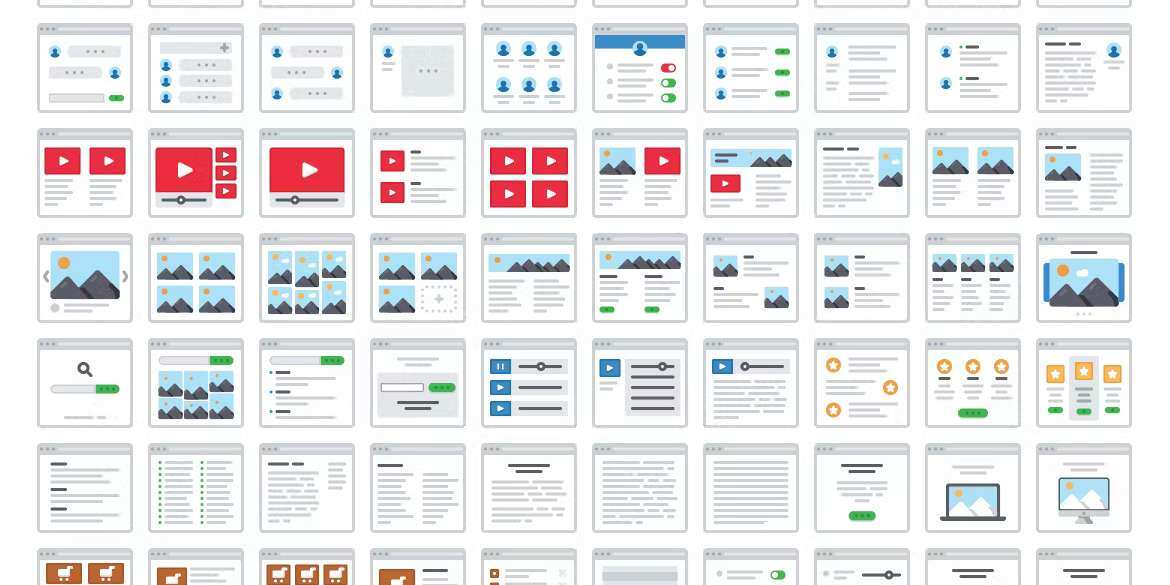Running experiments on your fintech website is crucial for fostering innovation and staying competitive in the rapidly evolving financial technology landscape. Through systematic experimentation, such as A/B testing or user experience research, fintech companies can make data-driven decisions that enhance website functionality, improve user engagement, and increase conversion rates.
These experiments allow for identifying optimal design choices, content strategies, and features that resonate with the target audience, ensuring a superior user experience. Moreover, experimenting helps mitigate risks by validating ideas in a controlled environment before full-scale implementation, ensuring compliance with stringent financial regulations.
Ultimately, a culture of experimentation empowers fintech firms and fintech website agencies to adapt swiftly to market changes, tailor their offerings to better meet customer needs, and achieve sustainable growth.
Here are vital experiments to consider:
Website optimisation
1. A/B Testing
- Purpose: Compare two web page versions to see which performs better on a specific conversion goal.
- Application: Test different headlines, call-to-action (CTA) buttons, images, page layouts, or content presentations.
2. Multivariate Testing
- Purpose: Test variations of multiple elements on a page simultaneously to understand how they interact and affect user behaviour.
- Application: Experiment with combinations of headlines, images, and CTAs to find the most effective configuration for maximum page conversion.
3. Usability Testing
- Purpose: Evaluate how easily users can navigate your website and complete desired actions.
- Application: Observe real users as they complete tasks on your site to identify usability issues and areas for improvement.
4. Heatmaps and Click Tracking
- Purpose: Visualize where users click, scroll, and spend time on your website.
- Application: Use heatmaps to identify hotspots and dead zones on your pages, informing layout and design changes.
5. Scroll Depth Tracking
- Purpose: Measure how far down the page users scroll.
- Application: Determine if important content or CTAs are being seen or if adjustments are needed to ensure visibility.
6. Session Recording
- Purpose: Record and replay user sessions to see how visitors interact with your website.
- Application: Identify confusing elements or navigation issues hindering the user experience.
7. Conversion Funnel Analysis
- Purpose: Analyse users' steps on your website before completing a conversion goal.
- Application: Identify where users drop off in the conversion funnel to optimise those steps for better retention.
8. Speed Testing
- Purpose: Assess the loading time of your website and its impact on user experience.
- Application: Identify slow-loading pages or elements and optimise them for faster performance.
9. Mobile Optimisation Testing
- Purpose: Ensure your website provides a seamless experience on mobile devices.
- Application: Test the mobile version of your site for usability, speed, and responsiveness.
10. Content Experimentation
- Purpose: Test different types of content to see what engages your audience the most.
- Application: Experiment with blog posts, videos, infographics, and other content formats to measure engagement and conversion rates.
Implementing the Experiments
- Set Clear Objectives: Define what you aim to achieve before running any experiment. Set your hypothesis and ensure you work towards proving or disproving that, but be measured.
- Select the Right Tools: Conduct and analyse your experiments using tools like Google Analytics, Optimizely, Hotjar, or VWO.
- Analyse and Act: After each experiment, analyse the data to draw actionable insights. Based on your knowledge, implement changes and continuously iterate to improve your website's performance.
By systematically running these experiments, you can make data-driven decisions that enhance your website's effectiveness, improve user satisfaction, and increase conversions.
What examples of A/B tests can be run on a fintech website?
In the dynamic world of fintech, where user experience and innovation are vital in staying ahead, A/B testing emerges as a powerful tool for optimising website performance and enhancing customer satisfaction. By comparing two versions of a webpage or feature against each other, fintech companies can gather invaluable insights into user preferences and behaviours.
This methodical approach allows for experimentation with various website elements, from the layout of landing pages and the phrasing of call-to-action buttons to the presentation of financial products and the structure of navigation menus.
Through A/B testing, fintech websites can refine their user interface, streamline the user journey, and ultimately, drive higher conversion rates. The following examples illustrate the breadth of possibilities for applying A/B testing to improve the fintech user experience and achieve business objectives.
Website experiments
- CTA Button Colour and Text: Experiment with different colours and text for call-to-action buttons to see which combination leads to higher click-through rates or conversions.
- Landing Page Layouts: Test different layouts for landing pages to determine which design leads to better user engagement and higher conversion rates.
- Navigation Menus: Compare variations of navigation menu designs or structures to find the most intuitive user journey.
- Onboarding Flows: Test different onboarding processes to see which is more effective at guiding new users through setting up their accounts and starting to use the service.
- Form Fields: Experiment with the order and number of fields in forms, such as sign-up or application forms, to see which leads to higher completion rates.
- Product Descriptions and Information: Try different ways of presenting product information to see which is more effective at communicating value and encouraging sign-ups or purchases.
- Pricing Structures: Test different pricing presentations or structures to see which results in better conversion or retention rates.
- Security Features Communication: Experiment with different ways of highlighting the website's security features to see which increases user trust and conversion rates.
- Personalisation: Test personalised content or product recommendations against a more generic user experience to see which leads to higher engagement.
- Progress Indicators: Test progress indicators for processes like account setup or loan applications to see if they improve completion rates by setting user expectations.
- Value Propositions: Experiment with different value propositions on the homepage or landing pages to see which resonates more with your target audience.
- Images and Videos: Test the impact of different images or videos on user engagement and conversion rates, especially those that explain complex financial products or services.
- Error Messages: Experiment with the wording and design of error messages to see which are more effective at helping users correct mistakes and continue with their tasks.
- Interactive Tools: Test the placement and design of interactive tools like loan calculators or investment projections to see which versions are more engaging and lead to higher conversions.
- Mobile Responsiveness: Compare different mobile designs to see which provides a better user experience and leads to higher mobile conversions.
These A/B tests can help fintech companies optimise their user journey, improve user experience, and ultimately increase conversions and customer satisfaction.

How to analyse the results of A/B tests on a fintech website
Analysing the results of A/B tests on a fintech website is a critical step in leveraging data-driven insights to enhance user experience and optimise conversion rates. This process involves meticulously examining the data collected from testing two variations of a web element to determine which performs better in achieving predefined objectives, such as increased user engagement or higher transaction volumes.
By employing statistical analysis to evaluate the significance of the results, fintech companies can discern genuine user preferences and make informed decisions about website design and functionality.
This analytical approach not only helps refine the user interface but also ensures that the fintech platform remains agile, user-centric, and aligned with its audience's evolving needs.
Through careful analysis of A/B test results, fintech websites can systematically improve their offerings, driving growth and customer satisfaction in the competitive financial technology sector.
Here's a step-by-step guide to effectively analyse A/B test results:
1. Review Test Goals and Hypotheses
- Clarify Objectives: Revisit the primary goals of your A/B test, such as increasing conversion rates, improving click-through rates, or reducing bounce rates.
- Hypotheses: Ensure you have a clear understanding of the hypotheses you were testing. This will guide your analysis and interpretation of the results.
2. Collect and Segment Data
- Data Collection: Ensure you have collected enough data for the test results to be statistically significant. This often means running the test until you have a large enough sample size.
- Data Segmentation: Segment your data based on user demographics, behaviour, or other relevant criteria. This can help identify how different groups responded to each variation.
3. Calculate Statistical Significance
- Significance Testing: Use statistical tests (e.g., t-test, chi-square test) to determine whether the variations' differences are statistically significant. Tools and software like Google Analytics, Optimizely, or VWO can automate this process.
- Confidence Level: Typically, a confidence level of 95% or higher is considered statistically significant, meaning there's a 95% probability that the observed results are not due to chance.
4. Analyze the Results
- Performance Metrics: Compare the performance of each variation against the key metrics you've identified, such as conversion rate, average session duration, or bounce rate.
- Relative Improvement: Calculate the percentage improvement of the winning variation over the control. This helps quantify the impact of the change.
5. Interpret the Findings
- Understand the 'Why': Beyond the numbers, try to understand why one variation performed better. This may involve qualitative feedback or further analysis of user behaviour.
- Contextual Factors: Consider any external factors that could have influenced the results, such as seasonal changes, marketing campaigns, or changes in user traffic sources.
6. Make Informed Decisions
- Implement Changes: If a variation significantly outperforms the control, consider implementing the changes permanently on your website.
- Iterate: If the results are inconclusive or there's room for further improvement, design follow-up experiments based on your learning.
7. Document and Share Insights
- Documentation: Keep detailed records of your A/B tests, including the hypothesis, test duration, sample size, statistical significance, and conclusions.
- Share Learnings: Share the results and insights with your team. Even failed tests can provide valuable insights to inform future decisions and strategies.
8. Consider User Experience and Regulatory Compliance
- User Experience: Ensure that any changes you decide to implement based on A/B test results do not negatively impact the overall user experience.
- Regulatory Compliance: In the fintech sector, it's crucial to consider how changes might affect compliance with financial regulations and data protection laws.
Analysing A/B test results is a critical process that requires a careful balance between statistical analysis and practical decision-making. Fintech companies can make data-driven decisions that enhance their website's performance and user experience by following these steps.
Should you need help optimising your fintech website contact our team today.




